Intel Core i5 661 Review
Intel Core i5 661
Does the combination of integrated graphics and dual cores make for the perfect CPU? Ed investigates.
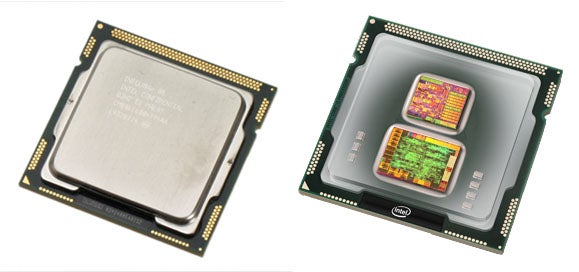
Verdict
Key Specifications
- Review Price: £163.99
The Intel Core i5 661 is the first CPU we’ve seen of a new series based on the new Intel Clarkdale design and for want of a better description it lies somewhere towards the top end of the bottom half of Intel’s current CPU line-up. In other words, it’s kind of ‘mid-range’. 
This dual-core CPU is built on Intel’s new 32nm manufacturing process and incorporates a graphics chip on the package, though not on the same die (the graphics uses a 45nm process). Collectively these new chips will be available under the Core i5 6xx and Core i3 5xx numbering schemes.
The key difference between these two ranges is that the 600s have Turbo Boost while the 500s do not. Turbo Boost is the ability of the CPU to automatically overclock one or more of its cores dependent on workload. When enabled, the CPU will constantly try and work at its maximum speed which, if all cores are under load, will likely be its reference speed. However, if only some of the cores are under load, the unused ones are clocked back and the extra thermal headroom is used to overclock the remaining cores resulting in better performance. 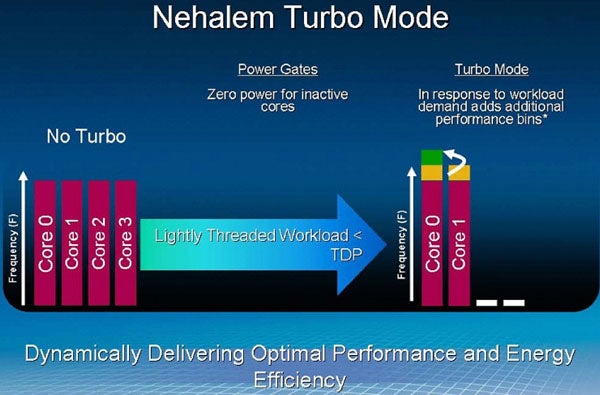
Clarkdale also takes advantage of Simultaneous Multi-Threading (SMT), which is the ability for each core of the CPU to run two threads at the same time thus speeding up multi-threaded operations or multitasking. Essentially, the CPU appears to the operating system like it has twice as many cores as it does but in the background it’s merely optimising the order in which it executes code so you end up with a performance improvement. However, the improvement doesn’t rival that of two physical cores.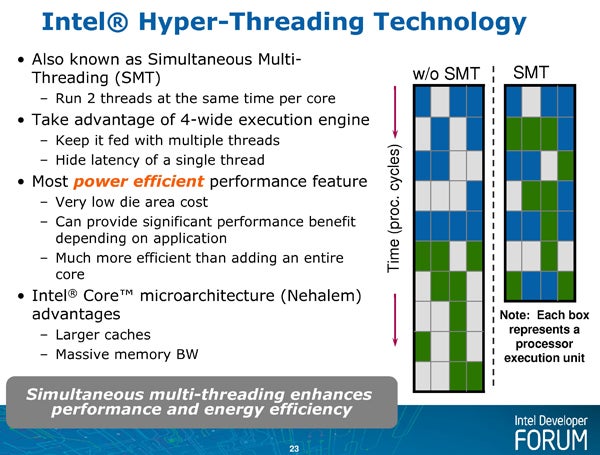
With regards the rest of Intel’s range, the Clarkdale CPUs can be thought of as replacing the Core 2 series as the entry level of Intel’s line-up, though Core 2 and various Pentium branded chips are likely to be available in shops for some time to come. This will leave the Lynnfield range (Core i7 8xx and Core i5 7xx) as the mid- to high-end and the Bloomfield (Core i7 9xx) series at the top. All these CPUs are based on Intel’s current overarching microarchitecture, Nehalem. In case you were wondering, yes, this is all rather confusing so rather than list the myriad subtle differences between all these ranges, we’ve put them in a table, where we hope everything will become clear.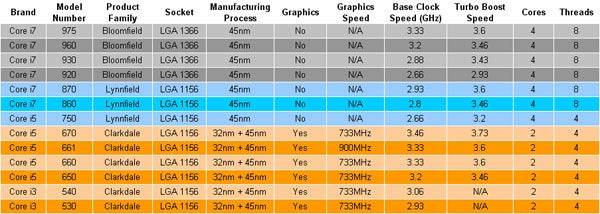
The key things to note are that Bloomfield CPUs require a different socket (LGA1366) and motherboard chipset to the rest of the range and as such are out on there own at the high-end where it costs £350+ just for the CPU and motherboard. The rest of the range fits in the LGA1156 socket so the Core i5 661 and other Clarkdale chips should work with existing P55 chipset based motherboards, though a firmware update might be needed. As such you could easily buy a Core i3 530 (£90), say, then upgrade to a Core i7 860 (£231) further down the line.
On top of this, Intel has released a new range of laptop CPUs, which complicates things further. Rather than a similar or proportional scaling down of technology through the range, as there is on the desktop side, the laptop range has no clear-cut difference between the overall mobile Core i7 and Core i5 lines bar the amount of L3 cache, which is a relatively minor difference. Meanwhile, Core i3 is again differentiated by its lack of Turbo Boost. So, all mobile Core i7, i5, and i3 chips have two cores and support SMT, use a dual-channel memory controller and work on the same chipsets. 
We won’t be looking at the mobile chips in detail in this article but we have already reviewed several notebooks that use the new chips, including the HP Envy 15-1060ea and Asus G60J that both use the new 720QM, and performance has been very impressive.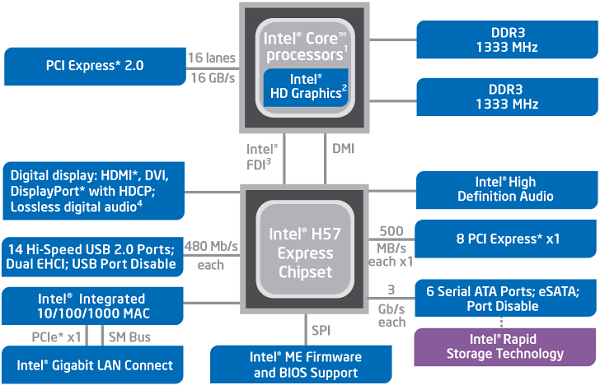
If you want to take advantage of the Clarkdale CPU’s inbuilt graphics, they can be used with motherboards based on the new H55, H57, and Q57 chipsets. Through the new Flexible Display Interface (FDI), these chipsets allow display connections on the motherboard to receive a video output from the CPU/GPU, something that P55 cannot do. Meanwhile Q57 is the same as H57 but also incorporates Intel’s vPro remote PC management system. With any combination of P55, H55, H57, or Q57, and Clarkdale CPUs you can add your own separate graphics instead and the integrated graphics will simply be ignored. 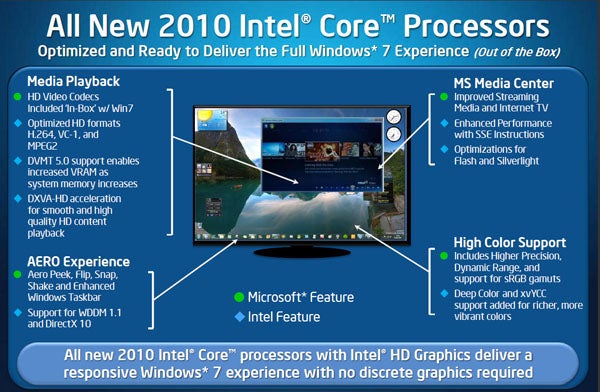
As to the specifics of the integrated graphics, it’s based on Intel’s existing integrated (on the motherboard, that is) solutions and is called GMA HD. It features 10 unified shaders running at 733 or 900MHz and supports DirectX 10. This isn’t exactly barn storming stuff and chipsets with integrated graphics from both nVidia and AMD have significantly more oomph but it should be enough for some casual gaming and general PC work. It also has Intel’s ClearVideo HD technology that provides hardware acceleration for video playback and improves video quality through such things as de-interlacing and inverse telecine, potentially making Clarkdale CPUs a great choice for home theatre PCs.
Getting back to the CPU we’re looking at today, the Intel Core i5 661 is rated to run at a fairly high 3.33GHz with a maximum Turbo Boost speed of 3.6GHz. This Turbo Boost increase is a little lower than we were hoping given the Core i5 750 starts at 2.66GHz and goes all the way up to 3.2GHz – nearly twice the performance increase but considering the high starting speed, it’s understandable. As for the graphics, they run at 900MHz. Like the rest of the Clarkdale range it also features a dual-channel memory controller which in this instance is rated to work with memory up to 1,333MHz. It also has 4MB L3 cache shared across both cores while each core gets 32KB+32KB (data + instruction) L1 cache, and 256KB L2 cache.
To give a fair comparison of this CPU’s baseline performance we started our testing by adding it to our current LGA1156 test board, the P55-based Intel DP55KG. We then ran our standard suite of CPU tests consisting of everyday CPU intensive tasks like editing photos, transcoding video, and gaming. We’re currently still using Vista for our testing to make for easy comparison to passed results but we shall transition to Windows 7 from this point onwards. 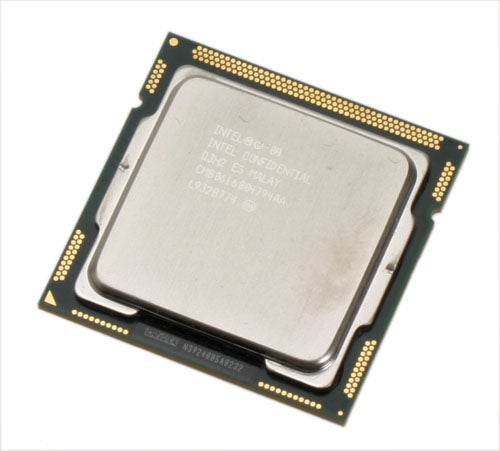
For comparison we’ve included the Core i7 965, which was Intel’s fastest CPU though it’s just been replaced by the slightly higher clocked but otherwise identical 975, along with the Core i5 750 which is the cheapest true quad core, Nehalem-based CPU. We’ve also included two of Intel’s higher end outgoing Core 2 range – the dual core E8500 and quad core Q9550. As for AMD’s competition, we’ve looked at the Phenom II X4 965, which despite being AMD’s fastest CPU is still cheaper than either the Core i5 750 or the 661.
Looking first at single-threaded applications and the combined advantage of Turbo Boost and the Core i5 661’s high initial clock speed means this CPU is a very strong competitor. In our Photoshop image editing test it only lost out by four seconds (two per cent) to the Core i7 965 – a chip that costs about five times as much – and only missed out to the same chip by four per cent in our standard definition video encoding test. In the single threaded version mode of Cinebench it even took first place by a notable five per cent margin.
Understandably, when it came to multi-threaded tests the Core i5 661 didn’t hold up so well. That said, it certainly left the Core 2 E8500 far behind and held its own against the Core i5 750, Core 2 Q9550, and Phenom 965 BE and it was only really the Core i7 965 with its ability to process eight threads at once that pulled away. 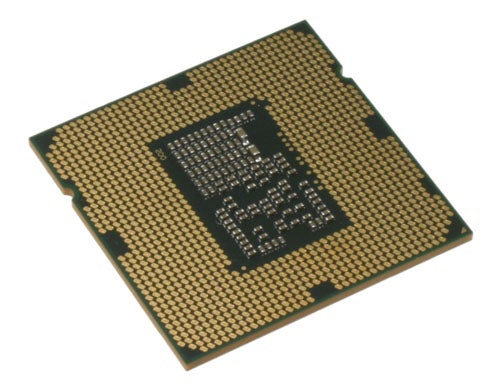
Looking next at power consumption and it’s no surprise to see the Core i5 661 drawing significantly less power than those CPUs with more cores, at both idle and under load. Perhaps most interesting is just how much power the E8500 uses – it’s worse than the Core i5 750 at idle and the same under load despite having half the number of cores. This really highlights the microarchitectural and manufacturing improvements between the Core 2 and Core i* ranges.
One of the apparent advantages of this relatively low power consumption is that it could leave plenty of headroom for overclocking and indeed that appeared to be the case in our testing. Without the slightest hassle we managed to up the Core i5 661’s base clock speed to 4.05GHz without any extra voltage and we’re sure you could easily push it a fair bit further without too much trouble. This improved its Cinebench scores from 3,967 and 9,133 to 4,442 and 10,262, respectively – a cool increase of 12 per cent across the board. Impressive though this is, the similarly priced Core i5 750 can also reach 4GHz and it has four physical cores.
As well as looking at the CPU’s performance we also gave the onboard GPU a quick run through. We started with the very undemanding ”TrackMania Nations”, which is a really fun casual 3D racing game that can look quite impressive on top hardware but also scales down nicely to run on modest systems. We ran it at a resolution of 1,366 x 768 with 4xAA and 4xAF (the same as we run on our laptop benchmarks) and got a healthy 42.6fps. So next we moved onto ”Enemy Territory: Quake Wars”, which we ran at the same settings as for the CPU performance testing (1,280 x 1,024 resolution, details on high, 0xAA, 0xAF) and got a less impressive 15.30fps. Based on this last figure, we didn’t even try to run our other CPU gaming test, the infamously taxing ”Crysis”, as we would have been looking at single figure framerates even at low res and medium detail settings. All told, gamers, should look to buy a separate graphics card.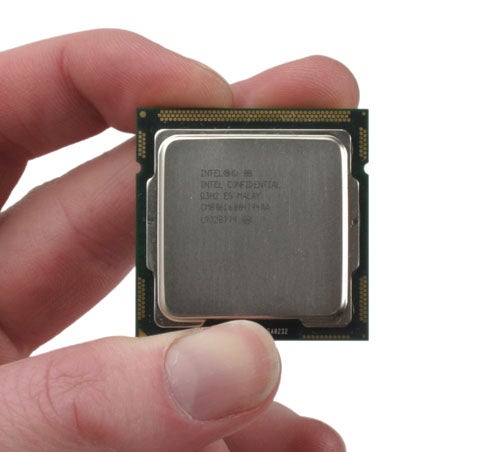
That said, the Core i5 661’s GPU delivers the level of performance we’d expect for integrated graphics, i.e. just about good enough to do a bit of casual gaming and keep desktop tasks ticking over. Also, by eliminating the need for a separate graphics card, or more expensive integrated graphics chipset, the Clarkdale series in general will hopefully result in more compact, low power, and low cost home and office PCs.
As for the CPU’s performance, it’s a close one to call. As the Core i5 661 is priced quite highly, our gut reaction is to recommend a true quad core alternative for the same price, i.e. the Core i5 750 or even the AMD Phenom II 965. However, thanks to its high clock speed, the Core i5 661 significantly outperforms these two in single-threaded tasks and holds its own in multi-threaded situations. Ultimately, though, if you’re not going to use the integrated graphics, we do think the two above alternatives are the better overall bet, especially as they can be fairly easily overclocked to a similar level as the Core i5 661 (around 4GHz) for more performance across the board.
”’Verdict”’
Intel’s new dual-core Clarkdale range of CPUs certainly seems to have great performance and if you’re looking for an entry-level Intel-based system, one of the Core i3 500 of Core i5 600 range is going to be a good start, especially if you’re going to use the CPU’s integrated graphics. However, if you don’t plan to use the integrated graphics, the 600 range, and in particular the Core i5 661 we reviewed, seem a just a little overpriced. For less money you can get a true quad core chip that will give you better multi-threaded/multi-tasking performance and with a bit of overclocking, better single task performance as well.
(centre)”’Single Threaded Tests”’(/centre)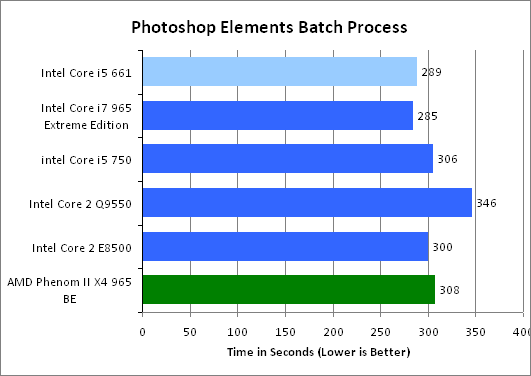
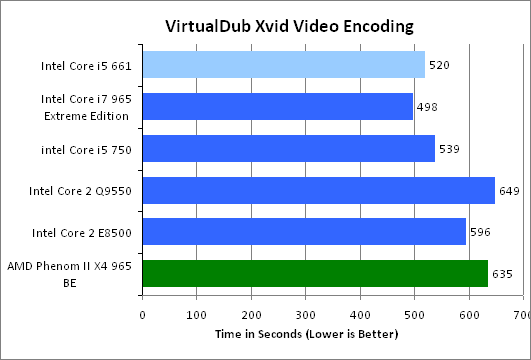
—-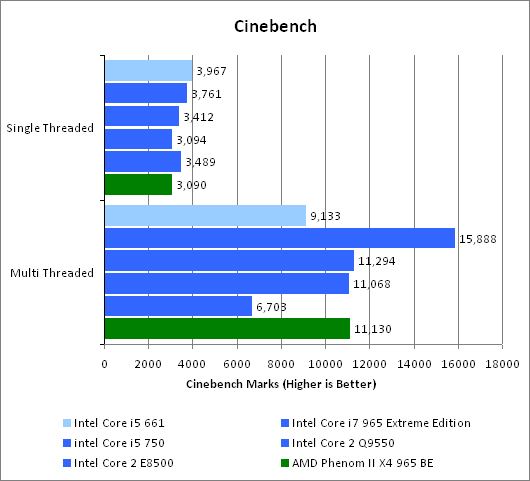
—-
(centre)”’Multi Threaded Tests”’(/centre)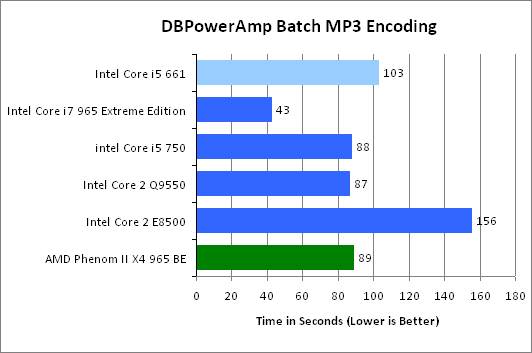
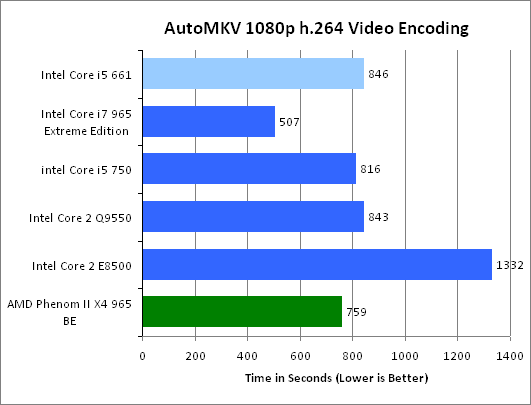
—-
(centre)”’Power Consumption”’(/centre)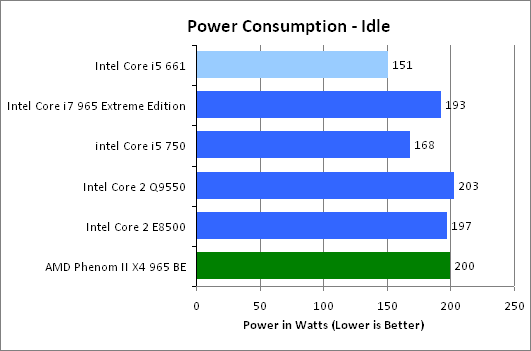
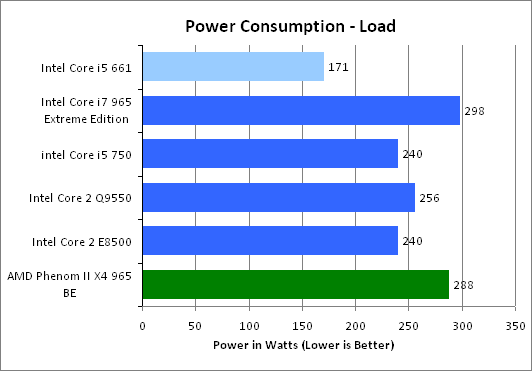
Trusted Score
Score in detail
-
Value 7
-
Features 9
-
Performance 7

